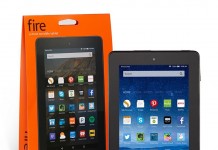 The digital world has substance in its own right, but we invented digital technology to enhance our physical world. It’s funny how we forget that sometimes.
The digital world has substance in its own right, but we invented digital technology to enhance our physical world. It’s funny how we forget that sometimes.
Take ereaders. Ereaders like the Kindle, Nook, and Kobo are popular right now. They are nifty. You can download books, you can click from one page to the next using buttons instead of fingers. They are lightweight if you’re the sort to carry a library with you. But is that it? I found the Kindle’s note-taking functions disappointing, especially when I wanted to transfer my notes to my computer. Turns out, proprietary concerns over copying content take precedence over the provision the simplest of digital functions, copy-paste.
When doing research, I need to capture and tag web content; I can do that using Delicious or Zotero. I want to do the same when reading newspaper and books. I might have a great idea when driving my car or talking with a friend; audio recordings should factor in. Video content will be useful when watching television, attending a concert, or walking in nature. Software needs to answer back to these original complex needs defined in the physical world.
I see some trends in this direction. Here are three examples. One, an application called OneNote is Microsoft’s attempt to create a unified repository for multiple sources and formats of information, both on and off the web. My first question is whether it allows for integration of non-Microsoft products. Two, Ricoh’s Visual Search and iCandy application allows users to point their device at a print medium and extend it with digital information. It looks very cool. Three, and perhaps most compelling, a study by Latitude (2010) asked children 12 and under to suggest new digital technologies. Thirty-eight percent of the children’s innovations called for more immersive content experiences, or seamless integration of digital and physical spaces.
These ideas and technologies are intended for a complex world, one in which digital information is understood to be a complement to other physical formats like print, human conversation, and natural phenomena, and in which speed and efficiency are complemented by quality and depth and integration of information in its many forms. Rather than trying to replace physical interactions and artifacts with digital ones, people are trying to make connections between digital and physical modes. It is a step forward.
Editor’s note: the above is reprinted, with permission, from John Miedema’s blog. PB
































In other words, he’s mainly unhappy that an e-reader isn’t a computer.
Actually computers make lousy ereaders. I like the screen interface of the ereader, I can make do with the Kindle’s keyboard and ‘mouse’. What disappoints me is the Kindle’s limitation in getting usable content on to my computer for further processing. The Kindle doesn’t need more hardware or complex software to make this happen. Amazon just needs to open up the content for reuse in more intelligent ways.